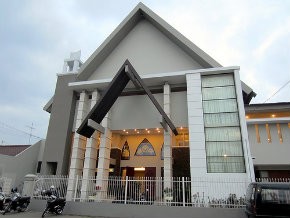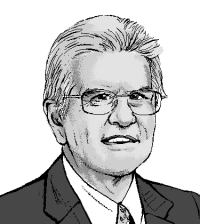The clash that wasn’t

I’m often struck by the chasm between the significance of a country and the attention it receives in Western media. One classic example is Indonesia, a country in every sense writ large. With 250 million people, it is by far the world’s largest Muslim nation. In fact, it has about as many Muslims as all the Arab Middle East countries combined. Yet few indeed are the nonspecialist Americans who could tell you the slightest thing about the country.
Partly, this ignorance is a matter of history. With its Dutch heritage, the country (the old Dutch East Indies) never made as much impression on the English-speaking world as did, say, India. And in recent years, Indonesia has been blessed by a tranquillity that has kept it out of global headlines. Contrary to familiar generalizations about Islam, this huge Muslim country is a functioning democracy that rarely sees the kind of chaos that so regularly makes headlines in Pakistan or Nigeria. With a trillion dollar economy—larger than Australia’s—it is also increasingly prosperous. Also, amazingly, its flourishing Christian minority is enjoying an era of rapid growth.
Read our latest issue or browse back issues.
Nobody can pretend that Indonesia is a monument to peace and tolerance. Historically, the country is no stranger to mass violence. Its war of independence in the 1940s was a savage racial conflict, and an anticommunist purge in 1965–66 claimed half a million lives. But both those spasms were driven by secular nationalism rather than religion.
On occasion, certainly, Islamic causes have sparked violence, and the country has had its vicious terror groups and hardline Islamist militias. In some parts of the country, like the islands of Sulawesi and the Malukus, Christians have suffered terrible persecutions and forced conversions. Generally, though, Indonesia’s powerful Muslim groups eschew extremism. The country is home to the world’s two largest Islamic movements, the progressive Muhammadiyah and the conservative Nahdlatul Ulama, which between them command an astonishing 70 million members. Both preach tolerance and obedience to law. In the Christmas season, their volunteers defend churches from terrorist attacks.
All of which helps explain just how well Indonesian Christians generally are doing. Christians make up at least 10 percent of the population—some 25 to 30 million people—giving Indonesia a substantially larger Christian community than the much better known Asian success story of South Korea. While some of these churches date their origins to missions in the Dutch colonial era, most of the recent growth involves very modern charismatic denominations of a kind that would not be out of place anywhere around the Pacific Rim.
Pentecostal movements have grown spectacularly, buoyed by revivals and healing crusades from the 1960s onward and boosted by claims to charismatic gifts. They also benefited from the general withdrawal from political activism following the suppression of communism. The Pentecostal Church of Indonesia has grown from perhaps half a million members in 1980 to 3 or 4 million today.
The country’s most visible Christian entrepreneur is Stephen Tong, founder of the Indonesian Reformed Evangelical Church, which despite its name has much in common with the Pentecostal worship style. In 2008, the church opened its Messiah Cathedral in Jakarta, a classic megachurch seating 6,000, a grandiose structure that would not look out of place in Seoul or Singapore. Other megachurches flourish in Jakarta and in Surabaya, the country’s second city. Whatever may be happening elsewhere in the country, these urban Christians show no concern about hiding their activities out of fear of provoking persecution.
Despite the tolerance that has allowed the megachurches to boom, local authorities have been stingy in granting Christians the right to build new places of worship. In practice, this has caused many Christians to focus their activities on private house churches and in shopping malls, making mall churches a distinctively Indonesian contribution to Christian architecture. But even in the face of this bureaucratic obstacle race, churches persist.
It’s an open question how long Indonesian Christians can enjoy their present prosperity, and there are some worrying signs. By far the most active Christian leaders tend to belong to the Chinese minority, whom majority Indonesians sometimes scapegoat as greedy exploiters. When the nation’s economy stalls, as it did in the late 1990s, it is not difficult to mobilize attacks on Chinese (and thus on Christians, given that the faith has such a strong ethnic identification). If Indonesia suffered another economic downturn, we could easily expect a new wave of pogroms and anti-Christian violence. If that were to occur, the most likely perpetrators would be the militia group the Islamic Defenders Front, which already has an ugly track record. In theory, matters could deteriorate fast.
Yet Christians are doing far better than the normal stereotypes of interfaith tension would suggest. Somehow, newspapers never publish banner headlines announcing “World’s Largest Muslim State Fails to Persecute Christians” or “Civilizations Not Clashing!”







